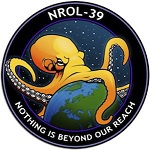Most are probably too young to remember but nanotechnology was supposed to be the most super amazing thing ever.
nanotechnology was supposed to be the most super amazing thing ever.
Like blockchain, 3d-printing, cloud and machine learning?
I feel like passionately arguing with you about 3 of your 4 examples
I’d like to argue why 3 of the 4 are absolutely amazing
It would be possible to argue about all of them, as each has genuine use cases. Just not to the extend they were praised during the hype.
I fully agree
Don’t forget AI!
“Machine learning” is what people who do AI for a living call AI.
It got smaller and smaller until we lost track of it.
This comment is the only reason I’m here. Every thing else is noise.
It’s still here, but you aren’t seeing it because it’s really small.
it’s nanowhere
God damn that got me good!

omg this gif is hilarious
It wasn’t a big deal after all
That’s exactly what my ex wife said.
It is still around, only the buzz around it died
deleted by creator
It’s old and common enough to not be noteworthy on its own. You do still hear about it sometimes, but only in the context of a new innovation or application. Even then it’s usually subcategorized.
It split into two.
The “very small scale structure manufacturing” part is alive and kicking. You are holding about a trillion perfect nanoscale devices in the palm of your hand right now.
The “we will make tiny robots that live in your body and fix you” club was always selling snake oil-and they knew it. The technology they were pushing just does not work at atmosphere temperature and pressure and immersed in oxidizing not quite neutral pH fluid.
Thankfully, there a much better way to make tiny machines that live in your body. That’s making/adapting/causing others to make proteins that do what you need them to do. Proteins are essentially bio-robots that can manipulate their surrounding by changes in their folds (conformation), for example by exposing binding sites in reaction to something binding to another binding site.
TLDR: nanotech is one of the largest industries in the planet. A lot of promises were made by idiots in the nineties, but biotech, another huge industry, has picked up the slack very well.
And if we count protein research as nanotech, afaik folding research is having its heyday.
it didn’t disappear, just got to small for you to see 😉
Should still be somewhere. Maybe in the carpet or the sofa…
Damnit, stole my thunder.
Mine too! Reddit moment where we all think we’re original.
I’m studying nano science right now, I think it still exists. And if it does it’s still a super amazing thing.
I’m no nanotech scientist, so I won’t pretend I know all of the ins and outs here, but I’m sure when most people think about nanotechnology, they’re probably picturing something like the later generation iron man suit from the marvel movies made up of billions of tiny nanobots that can reconfigure themselves and such. If such things will ever be possible, they’re still a long way off
I have a hunch you probably have some visions in your head of tiny robots similar in size to a red blood cell swimming around in someone’s blood stream, that seemed like a trope that was used by a few different sci Fi series when I was growing up, and certainly the kind of thing I personally picture when I think of nanobots. Problem is, at the nano scale, those kinds of things are kind of huge, a blood cell is a few thousand nanometers across. Most of what we’re doing with nanotechnology is just a handful of nanometers in size, at the scale of a few molecules or even atoms. Eventually we may be able to put some of those parts together to make tiny robots and computers and such, but right now we’re still kind of figuring out how to make the nuts and bolts and gears and such to make those bots out of.
There’s also a lot of nanotech research that you may not really think of as technology but more as something like material science or chemistry. Any time you hear about new developments with carbon nanotubes or graphene, that’s nanotechnology. Practical applications for stuff like that are still mostly works in progress, we’re probably years, decades, maybe even centuries out before some of those things really come into their own, but when we do work out the bugs, they will absolutely be revolutionary.
But it’s not all far future stuff, it’s almost guaranteed that you have used and maybe even have in your home or on your person right now something that makes use of nanotech in some way. One example I saw mentioned a lot is sunscreen, there’s a lot of sunblock that makes use of zinc oxide and/or titanium dioxide nanoparticles, clothing may contain nanoparticles to help with things like waterproofing, reducing odor, etc. there’s lots of mundane nanotech that you’re probably already taking advantage of.
Nanotubes an graphene themselves had a deep hype cycle. They’re super strong… as long as they’re atomically perfect. The second bit just kind of got left out of the popsci stuff circa-2009.
The biggest thing about technology nobody talks about is manufacturing. The physics was there to design a modern GPU in WWII, it’s just that reliably making a thing with few-hundred-atom switches starting with 1940’s tools is a very hard problem. The correct approach to do so wasn’t even clear until the 70’s or so, and then it took many decades of finetuning and building up ever larger and more expensive fabs that can print features that small in environments that perfect.
There’s no clear way to place individual atoms of a large object at reasonable price right now. Maybe some kind of biotech will make it possible eventually, or just scaling up current atomic manipulation techniques a lot, but for now CNTs are just high-tech asbestos.
As a nano engineer, youre 100% right - with the added slowdowns of safety research. Many of these particles are entirely different beasts on a nanoscale, an example commonly used is microscopic copper is just copper, nanoscopic will have you dead within the hour if inhaled (dont quote my timeframe on that one).
That being said many cool materials are still coming out, just aren’t yet at that commercialized availability level yet.
For example graphene has the potential to replace copper -at least in high performance applications- cause its got some fucked levels of conductivity
Edit for some more examples cause I’m a nerd about this stuff:
Carbon nanotubes make vantablack, the material that can absorb 99.9% of visible light (not that exciting beyond a party trick commercially, but in areas trying to minimize electromagnetic noise this is revolutionary).
Silver nanoparticles have been shown to have passive disinfectant properties, leading to the possibility of a cloth that you could run dirty water through and make it drinkable.
And my favorite being we’ve already created the carbon based structures (can’t recall if it was nanotubes specifically) with theoretically high enough tensile strength that if made a couple kilometers long could be used to lasso an asteroid and create a space elavator
About the space elevator thing, even with mystical materials, it’d need to be 110.5km long with a counterweight. Assuming it could work at all on Earth (it can’t, but let’s assume it can) the amount of material required would be insane. I can’t find where anyone has calculated the mass of carbon nanotubes needed, but I’m sure it’s out there.
Assuming the material issue is solved somehow though, it’s still going through the atmosphere. How does it handle those forces? It’s untenable to have on Earth. It’s possible on the moon, which would also require much less material since it has less mass.
So what about APM? That’s the thing I’m waiting for :-)
What’s apm?
Shit you and us all.
Worst part of nano is that error is intristic, how much error is where the fun comes in
In the maths in Engines of creation, the errors were supposedly so small they were negligible.
For sure, and thats generally the goal of any engieering - the biggest question is what error are we measuring? Something like vesting a fully autonomous drone, not even close; tubes in a funny shape that trap all light, were already there 99.9%
IIRC it was around one misplaced atom every century for some throughput. It’s like digital vs analog or so I understood it.
While we’re at it, how about cybernetics, too?
Remember that old 80s future movie where a guy with no cyber mods was trying to compete in a fighting competition in order to prove that it was better to be fully human?
Prostetics have gotten extremely advanced in the last 20 years. People are controlling and getting real feedback from replacement limbs.
Unfortunately, even our most advanced ones are more limited than a lot of people think and have a high rejection rate of around 44% that’s never talked about. Some do genuinely like them, but many say they still prefer the relatively simple body powered prosthetics, or none at all.
This could change as advancements are made, but as of now they’re a bit of a scam.
Yeah, both nanotech and cybernetics are everyday things. Still very expensive, but both have mostly reached enough milestones that they go by whatever their more specific puposes are. Like prothetics with feedback aren’t called cybernetics because cybernetics is too broad a term.
We can literally give sight to the blind, hearing to the deaf, and make the lame walk again.
We also have the very cyberpunk distopian problem of people being left with implants that are no longer supported by the manufacturers [2] [3]
At least we don’t need Neuropozyne (Deus Ex).
Btw, what happened with the nanotubes-coated contacts that neurons are all too happy to connect to?
Totally replaced by the most super amazing AI ever
It’s used in medicine, meta materials, and physics everyday.
This. You just don’t hear the word anymore. For example, it was instrumental in producing the COVID-19 vaccine.
The reason pencils work as well as they do is because of the way they are constructed, of nanomaterials.
Graphite is now a nano material?
Well it’s not suddenly a nano material. It’s always been one. We are still exploring it.
Much like one of the ways stained glass was colored in the medieval period involved adding materials to the glass that acted as nano materials. For example this one particular shade of red needed gold.
Micro-electro mechanical systems (MEMS) are extremely successful. You have them in your phone and lots of other devices. It turns out semiconductor manufacturing techniques could be leveraged to make some useful devices but that is about it. There is obviously a lot happening at these scales in biology, semiconductors, materials science etc but the grey goop of nanobots turned out to be a fantasy based on extrapolations that don’t seem to hold up well with physical materials thankfully. One less thing to worry about. Now we only have climate change, pathogens, war etc. Hopefully the machine learning bubble will blow over in a similar fashion, genuinely revolutionary in some areas but increasingly difficult/uneconomical to scale into others.
I mean… you’re surrounded by trillions of perfect nanotech devices. They’re called MOSFETs, and they make literally the entire modern world go round.















